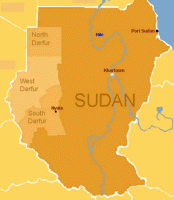
This post, written by Natasha Kieval, Programs Intern, reviews the conflict in Darfur at its present stage.
2013 marks the 10 year anniversary of the beginning of the genocide in Darfur. Last week, Nicholas Kristof, American journalist and activist, published this op-ed in the New York Times, entitled “Darfur in 2013 Sounds Awfully Familiar.” In this op-ed, Kristof writes that while the media has largely stopped covering the slaughter of Sudanese by its own government, the violence continues.
The UN reports that so far this year 300,000 people have fledthe fighting in Darfur, which is more than in the past two years combined. According to the same UN report, people are fleeing “inter-ethnic community violence, or conflict between rebel movements and government forces, much of which is driven by the struggle for resources such as land, water, cattle, and gold.” Darfur continues to rank as one of the world’s largest humanitarian operations, with more than one million people living in camps. According to Kristof, the current violence in Darfur is committed by Khartoum’s government against two previously untargeted Arab ethnic groups: the Salamat and the Beni Hussein. Sudan’s government covets gold that has been discovered on the land of the Beni Hussein. The government distrusts the Salamat as potentially disloyal to the regime and are being expelled so the government can give their land to the Miseriya, an Arab group more loyal to the regime. Inter-communal violence also exists. The Miseriya and the Salamat tribes began feuding on Friday, and so far 94 have been killed. This is particularly remarkable given that these two tribes signed a peace agreement on July 3. The Reizegat and Beni Hussein tribes have also experienced conflict, which began last January over control of the region’s gold mines. The two tribes signed a peace pact on Thursday.
Kristof also published an op-ed last week, entitled “A Policy of Rape Continues,” which details the rape of a Salamat girl and describes the Sudanese government’s strategy of using rape to humiliate targeted ethnic groups.
In late April, the Senate introduced the Sudan Peace, Security, and Accountability Act of 2013, which remains in committee. It attempts to shine a spotlight on the abuses in Sudan and create a strategy to combat these abuses. In June, the Tom Lantos Human Rights Commission held a hearing on human rights abuses in Sudan, at which John Prendergast of the Enough Project gave several examples of action the US government could take – read histestimony for details.
While the world waits, the violence continues. For additional coverage of this ongoing conflict, check out Radio Dabanga and Sudan Reeves.
